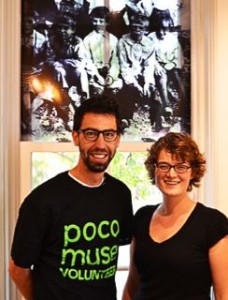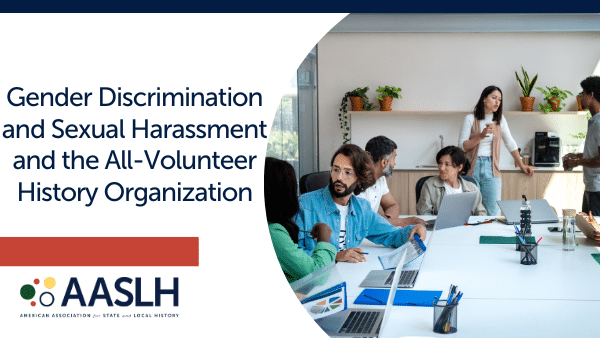“I was hooked” is a funny expression, isn’t it? You’re captivated – captured, in a sense – without realizing it. You’re pulled in directions against your will, gradually swimming towards something appealing. You’re hooked.
One of my favorite classes in college, American Home, combined oral history and American vernacular architecture. This was more than a research class. This was about becoming part of a neighborhood. I was hooked.
One day I stepped up to my professor and asked her, “If I did a project like this next year and got paid for it, what would that look like?”
Within months, my fellow alum and story enthusiast, Jake, and I were serving at the Porter County Museum through AmeriCorps. Work was slow at first. We were developing an oral history project focused on a neighborhood in Valparaiso, Indiana and did little else.
 The Porter County Museum was a small local history museum with a staff of one exhausted director, Kevin, who had little time to delegate. One day, he came into our office at 5 p.m. and told us his frustrations about his ever-growing to-do list.
The Porter County Museum was a small local history museum with a staff of one exhausted director, Kevin, who had little time to delegate. One day, he came into our office at 5 p.m. and told us his frustrations about his ever-growing to-do list.
“What’s the easiest thing on your list?” asked Jake. That was the hook. We stayed at the museum until midnight, going through Kevin’s to-do list.
Halfway through our second year of AmeriCorps, we’re now involved in every area of the museum. I can look back and say that I’ve learned things at my age and experience level I wouldn’t have learned elsewhere. I dove headfirst into collections, research, exhibit design, and community engagement. What appeared to be an engaging research project became an intensive, high-stakes Museum Studies program.
So, what does AmeriCorps have to do with this? Couldn’t I have done this as an intern or volunteer?
Here’s what AmeriCorps offers a recent college graduate:
- Living stipend
- Education awards
- Forbearance on your student loan
- Health insurance
- Career experience
- Alumni network
- Networking opportunities
Besides these benefits, had Jake and I not been in AmeriCorps, we would have missed out on what was most valuable at the museum: reflection.
When your fellow AmeriCorps members are doing things like helping to alleviate poverty, serving the homeless, or fighting drug abuse, you tend to question whether your oral history project is making a difference. Sharing our experiences with these other members, however, changed how we regarded our work at the museum.
We weren’t simply working to preserve a bunch of old stuff, nor were we just helping Kevin with his to-do list. We were working to bring a diverse group of people together in one place.
Service takes many forms. Pausing each month and talking with the other AmeriCorps workers helped us look at our exhibit design and museum tasks within a broader context.
Our oral history project was a piece of the community service puzzle, encouraging others to invest in the place where they lived because they shared a past. They heard this story and they were hooked – to the past, to each other, and to serving their community.
You can find out more about AmeriCorps. Positions are available in contracts of 1700 hours, 900 hours, and 300 hours
Emily Royer is a recent graduate of Valparaiso University with a degree in French and the Humanities. She is currently finishing her second year as an AmeriCorps Member at the Porter County Museum in Valparaiso, IN, where she is the co-creator of the Stories Project – an ongoing Oral History project reinvesting the places where life is lived with meaning.



